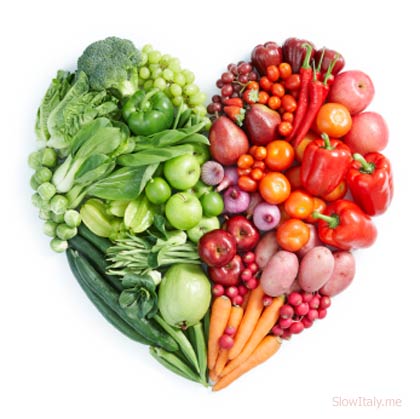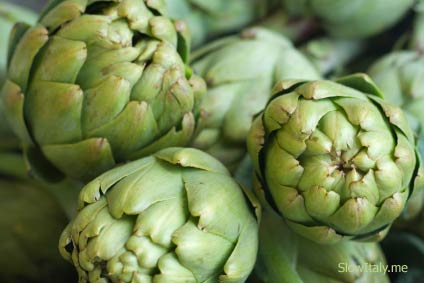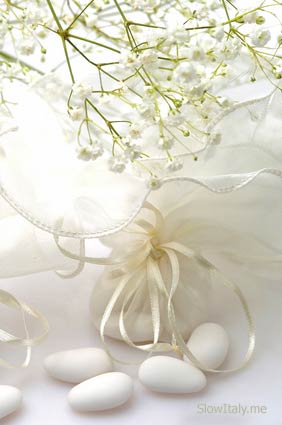Italian Love Foods: aphrodisiac foods in Italian cuisine
Named after Aphrodite, the ancient Greek goddess of love, aphrodisiac foods are substances or ingredients thought to provoke or reinforce sexual desire. In ancient Egypt and Rome, people associated the shape of foods with aphrodisiac benefits. The belief was based on the idea that the food’s similarity to the shape of the genitalia was an indication of its virtues.
Foods have also been celebrated as aphrodisiacs because they are rare and expensive, or surrounded by an aura of mystery, such as truffles, saffron, and even chocolate.
Aphrodisiac foods can be stimulating for two reasons, either because they work on any of the five senses – scent, for example, can work as an enhancer of desire similar to essences used in perfumes -, or because of the effects they have internally in our body. Some herbs are known to be vasodilators – which open and expand the blood vessels -, or nerve tonics that enhance concentration and performance, while again others are known to provide a ‘feel-good’ effect, all effects that make them good candidates to be considered ‘Love foods’.
1. Artichokes
Artichokes were introduced to Sicily by the Arabs in the ninth and tenth centuries and their virtues were already appreciated by the ancient Romans. In 77 A.D., the Roman naturalist Pliny the Elder (23–79 A.D.) mentioned it in his Naturalis Historia under the name cardus.
They were thought to enhance sexual prowess and appeal. The way they are consumed is also evocative of love; peeling away the leaves was associated with stripping away the inhibitions, and possibly clothing.
Catherine of Medicis was particularly fond of artichokes, a passion that was considered improper, given their reputation for stimulating the libido. The artichoke became popular in France when she moved there upon her marriage to Henry II.
The ancient Romans used to preserve artichokes in honey and vinegar, and season them with cumin, so that they could consume them year round. It was not uncommon at that time to mix sweet and sour flavors in the same dish.
Today, artichokes are consumed raw, in salads, or cooked, in risotto, pasta or as a creamy bread spread on crostini. Lamb preparations in Liguria and Sardinia include artichokes, as do a variety of Jewish-Italian dishes, such as the wonderful Carciofi alla Giudia. There is also an Italian artichoke liqueur, known as Cynar.
2. Basil
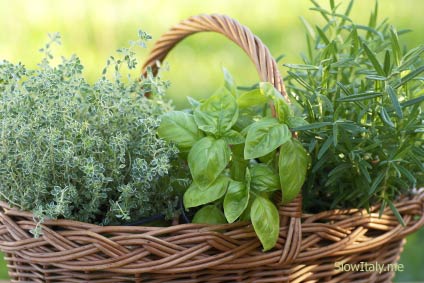
The Romans considered basil the herb of love and to this day it remains a symbol of love in parts of Italy, as reflected in its Tuscan name amorino (little love). The association with love may stem from its heart-shaped leaves, but this is not the only explanation.
The smell of basil is thought to create instant attraction, reason why in Chieti province in Central Italy it is called bacia-Nicola (kiss-me-Nicholas). This explains also why it is used as an ingredient in the perfume industry.
A a dark tale from Boccaccio’s The Decameron associates basil with passionate love. Isabetta planted the head of her beloved Lorenzo, who had been assassinated by her brothers, in a herb pot and planted basil over it, watering it continuously with her tears…
The type of basil used in Italian cuisine is sometimes referred to as sweet basil, as opposed to Thai basil and other types of basil used in Asia.
In Italy mainly three varieties are cultivated, differing by the size of their leaves and their flavor: Basilico Genovese (Liguria), Basilico gigante (Tuscany), Basilico Napolitano (Campania).
Genovese basil is the one used to make pesto, but basil also has a million other uses in Italian cuisine. It is the perfect compliment to tomato and works well in pasta dishes, sauces, and soups, and even…desserts.
3. Almonds
Almonds have been regarded as an aphrodisiac food and symbol of fertility since biblical times.
They continue to be a standard ingredient in Italian cuisine, especially in desserts, sweets and biscuits, such as Cantucci, Amaretti, marzipan and torrone.
At Italian weddings, the classic wedding favor are confetti (candy-covered almonds) wrapped in tule given as a sign of fertility.
4. Anise
Anise has long been considered to have aphrodisiac properties. Medieval Italy associated it with youth and vigor. Its flavor resembles that of liquorice, fennel, and tarragon.
The aphrodisiac reputation of anise dates back to Pliny the Elder. In his Natural History, where he lists various herbs and spices, anise is included as an aphrodisiac and he recommends to use it in wedding cakes.
It is used in Italian cuisine to flavor some dishes, drinks, and candies. Italy also counts a huge variety of aniseed liqueurs, especially popular in central and southern Italy: Aniciono, Anisetta, Mistra and Sassolino. Aniseed (together with coriander) is also the main herb ingredient in Sambuca Romana, which is probably the most famous one.
5. Mint
Pliny reported that the pleasant fragrance of mint was an indispensable ingredient of every festive meal. In his De Re Rustica (On Agriculture), Columella presented a recipe for a green sauce, – some kind of precursor to pesto -, to accompany roasted meats, made of different varieties of mints.
Its consumption was thought to leave in ‘mint’ condition. Garlands woven from these plants were sometimes called Corona Veneris (crown of Venus), for her association to love.
Fresh leaves are used to flavor both salted and sweet dishes, or in salads, while the dry ones can be used to make herbal teas. Mint is also used in Italian liqueurs, such as Galliano and Strega.
6. Asparagus
There are three types of asparagus in Italy: white, green and purple, the latter having high sugar and low fiber levels. Asparagus are consumed simply with olive oil, or with eggs, alla parmigiana, with ham or in salads.
Arabs considered them aphrodisiac especially when covered with egg yolk (which is considered the most sexually potent part of the egg) and seasoned with saffron. Today, many asparagus-based recipes still include eggs. Instead of saffron, truffles or flat-leaved parsley can be used.
Chinese herbalists used asparagus to help with infertility, and it would often be recommended to help keep blood vessels healthy and gets the blood flowing.
While its healthy properties are undeniable, as a source of potassium, phosphorus, calcium and vitamin E, its aphrodisiac reputation first came from its supposedly phallic form. The discipline known as the ‘Doctrine of signatures’ prevalent in the 16th century, said that if one thing is reminiscent of another, it will improve or aid that which it looks it. So, if a food looks sexual, it will improve or enhance that what it looks like…
7. Coffee
The Arabs and the Turks brought coffee to Europe, but it is through Italian caffè that the word entered the English language. It was also in Italy that coffee drinking became an art.
A recent research by the University of Michigan on the sex stimulating effects of coffee, revealed that people who drink coffee daily are more likely to describe themselves as sexually active than those who did not drink coffee. These results may be associated with coffee’s antidepressant effect.
More about Italian coffee.
8. Chocolate
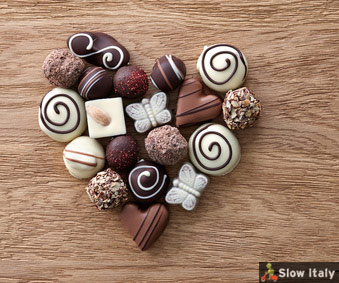
Chocolate is the cliché aphrodisiac, par excellence. Its romantic appeal works on different levels. First it is marketed in attractive shapes and packagings that make it particularly appealing to the eye. Also, its voluptuous texture and taste works on our senses. Internally, it also helps the blood to flow better and, last but not least, it provides a general ‘feel-good’ effect on the body. It is believed to stimulate the production of the neurotransmitter serotonin and thus…why not, the feeling of being in love.
Chocolate actually contains two ingredients with potentially sex-enhancing effects: anandamide and phenylethylamine, a natural form of amphetamine and antidepressant. Chocolate also contains theobromine, which boosts endorphin production, responsible for the feel-good effect.
Chocolate was considered such a potent aphrodisiac that monks were forbidden to drink it!
Italy has a long tradition associated with chocolate making. The most famous chocolate towns of Italy are Turin, Modica, Naples, Perugia, Pistoia and the chocolate Valley in Tuscany, but you can find excellent artisan chocolatiers also in Bologna, Rome and many other Italian towns. Read more: 5 Italian towns for chocolate lovers.
9. Saffron
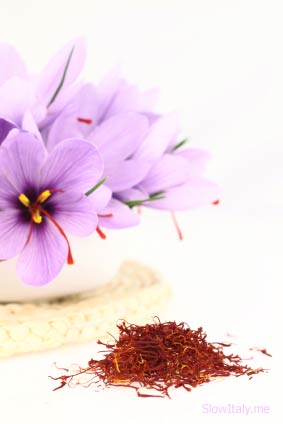 Used in cuisine, but also as an ingredient in Italian liqueurs, such as Strega, saffron is one of the most expensive spices in the world.
Used in cuisine, but also as an ingredient in Italian liqueurs, such as Strega, saffron is one of the most expensive spices in the world.
It is said to stimulate the erogenous zones. Recent studies have demonstrated that the picrocrocin contained in saffron has hormone-like effects, allegedly having the ability to increase erotic sensations.
In ancient Persia, saffron was sprinkled on the marital beds of newlyweds to encourage sexual activity and fertility.
9. Fennel
Rich in anethol, an essence also found in aniseed, fennel is widely used in Italian cuisine to season foods. Precisely because of its strong flavor it is often used to mask undesirable flavors in other foods, which explains the origin of the word infinocchiare (to cheat, to deceive).
Finocchio, the Italian word for fennel, is also the common and insulting slang term for a homosexual male in Italy.
10. Figs
Figs have many uses in Italian cuisine. They can be eaten fresh, dried or seasoned. Some authors consider them among the world’s sexiest fruits, reminiscent of a woman’s womb. They are plump and soft inside, with a sweet, pink pulp and a dark violet or green peel, depending on the variety.
In Italian, virtually all fruit trees are designated by a masculine noun, while the fruit itself is usually feminine in gender: pero (pera), melo (mela), cililegio (cililegia), pesco (pesca). Only the Italian word for fig is used both for the fruit and the tree…while the feminine noun is a rather rude word to refer female genitals…
11. Pine nuts
The Roman poet Ovid, in his Art of Love, lists pine nuts among the aphrodisiac foods.
In Italy, it is used as an ingredient in pesto, in meat and fish dishes, as well as in desserts, stuffings, sauces, especially in Sicilian and Neapolitan cuisines.
Galen of Pergamon, the Roman physician and philosopher, recommended a bed-time snack of pine-nuts. Pine nuts are also often cited as potent ingredients in love potions.
12. Thyme
In ancient Rome and in medieval Rome thyme was thought to be a source of courage.
In Italian cuisine, it is used as a basis for marinades and sauces. It is a proven nerve tonic, effective against physical and psychological asthenia.
13. Rosemany
Like mint and thyme, rosemary is a general stimulant. It makes a nice addition to roasted meats and vegetables, and is extremely tasty added to focaccia.
14. Truffles
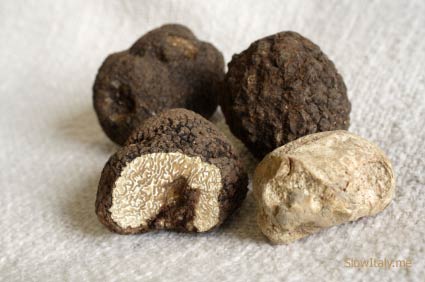
Like saffron, truffles derive their aphrodisiac status partly from their rarity and luxuriousness.
Their musky sent closely resembles that of pheromones, which enhances healthy libido in men and women and is said to stimulate the skin.
Alexandre Dumas said about truffles that: “They can, on certain occasions, make women more tender and men more lovable.”
More about Italian truffles.


